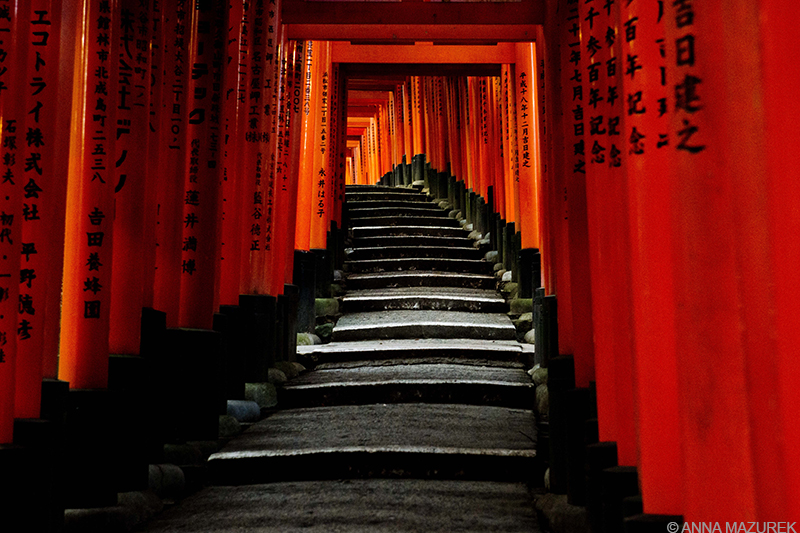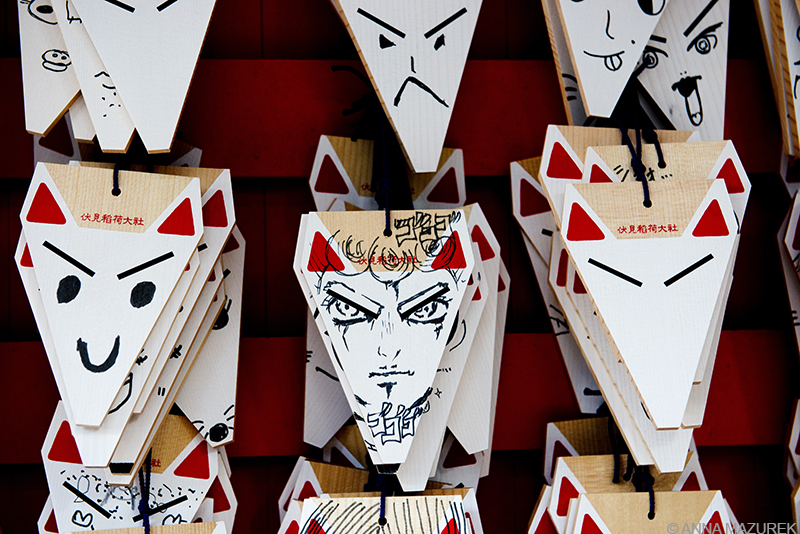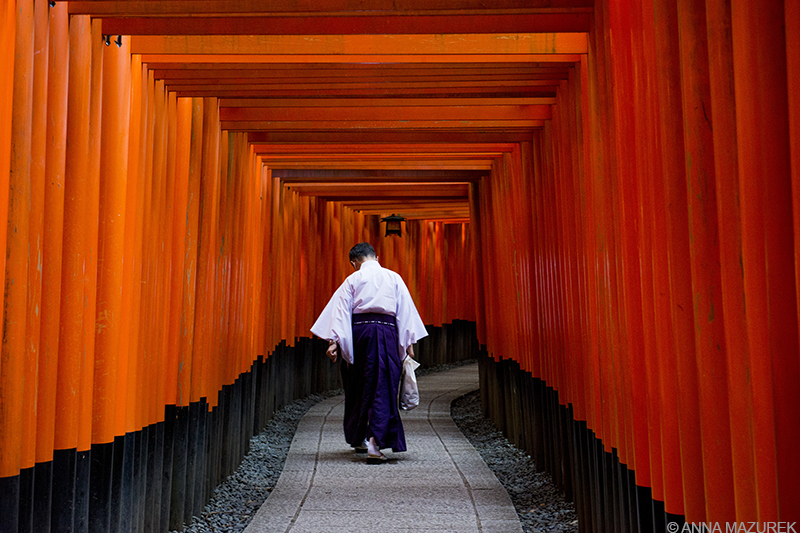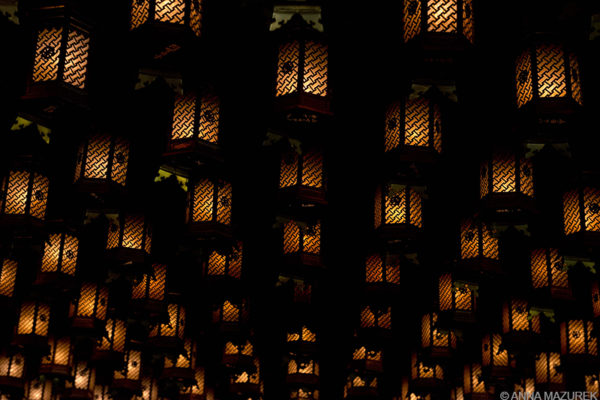
Fushimi Inari Shrine near Kyoto, Japan
Japan was not the nonchalant laid-back Asia I’d grown to love while living in Thailand. There was efficiency, guardrails and drinkable tap water. And, tour guides with megaphones.
The swarms of tourists were tainting my experience and photographs. I prayed Kyoto would redeem my image of Japan.
I had two goals on my trip—to visit my friend, Nick, and photograph the iconic red archways, known as torii gates, of the Fushimi Inari Shrine. Nick frowned. “Good luck getting photos without any people,” he said. “That place is always crowded.”
I took his warning as a challenge.
My alarm went off at 4:30 a.m. Determination masked my sleepiness. At 5:30 a.m., I was on the first train out of Kyoto Station bound for the Inari Station. The early bird gets the photo.

People write their wishes on the back of votive tablets called ema and leave them at the main temple at the base of Mount Inari. Foxes are considered the messenger for Inari, the Shinto god of rice.
The shrine was almost deserted when I arrived thirty minutes later. I walked past the main buildings toward two parallel rows of torii gates, which line the walkways of sacred Mount Inari, named after the Shinto god of rice. The two rows merged into a single row of larger gates. Each was inscribed in Japanese with names of wealthy donors. Along the path were small shrines filled with tiny gates donated by others with shallower pockets.
I wandered up the trails in search of the perfect mixture of light and composition. I did not see another foreigner for hours. A few locals emerged from the red maze on their morning walk. A woman smiled at me with curiosity under her white visor and said hello. Her outfit was as immaculate as the window mannequin of an outdoor store – a spotless jacket and ankle-length hiking pants. Later, a man wearing traditional clothing rushed past in wooden sandals. His robes swayed side to side with his stride.

There are more locals than tourists at Fushimi Inari Shrine at sunrise.
Despite the summer humidity, the locals wore long jackets and pants. Thirty mosquito bites later, I envied their clothing choices. My t-shirt and shorts offered no protection. I pulled a plastic poncho out of my bag and wrapped it around my waist like a skirt, which attracted more curious glances.
I took hundreds of photos over the next two hours. When the first tourist emerged onto the trail at 8:30 a.m., I promptly walked toward the train station. My time slot was over.
A herd of foreigners rushed off the train from Kyoto as I was boarding. I smiled, content with my new discovery. The secret to travel is getting up painfully early while the tourists and shopkeepers are still asleep. The reward is silence, photos with clean backgrounds and a glimpse of the real culture.
How to get to Fushimi Inari: Take a JR Nara Line train from Kyoto station two stops to the Fushimi Inari Station. The shrine is walking distance from the station.
__________________________________________
COMING UP:

Lanterns cover the ceiling of the Henjokutsu Cave at the Daisho-in Buddhist Temple in Miyajima, Japan.
The Ultimate Guide to Japan
Next week, I’ll post an in-depth photo guide to the best places to visit in Japan complete with logistics and cost. In the next Travel Tuesday Interview, I chat with Tokyo Becky, an American expat who has lived in Japan for 10 years, about budget travel tips and off-the-beaten path destinations!

